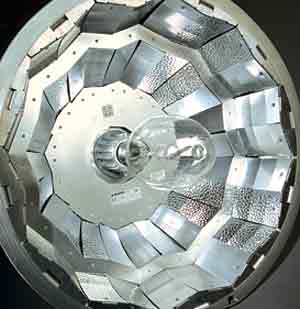Site Lighting: Optical Systems Design and Application Guide for Site and Roadways
Learning Objectives:
- Identify the lighting requirements in each area of site lighting.
- Describe different methods to direct light toward intended areas or away from areas not to be illuminated.
- Describe lighting distribution types and how they are best suited for lighting outdoor environments.
- Explain how isofootcandle plots are used to design site lighting.
Credits:
Architecture and light: The two are intertwined in good design of all buildings, but the same is true of building sites. Outdoor spaces frame and enhance any building design. Depending on the lighting used, these outdoor spaces can create settings that might be attractive or mysterious, inviting, or secluded, secure-feeling or foreboding. With buildings and spaces being used during more hours of the day and night, good site lighting design becomes as important as good building lighting design.
Outdoor lighting, like all artificial illumination, is based on an understanding of light principles and the specification of luminaires that meet one's objectives. A luminaire is defined by the Illuminating Engineering Society of North America (IESNA) as "a device to produce, control, and distribute light. (It is) a complete lighting unit consisting of the following components: one or more lamps, optical devices designed to distribute light, sockets to position and connect the lamps to a supply of electric power, and the mechanical components required to support or suspend the housing above grade."
From a pure lighting standpoint, the main items that differentiate luminaires are the internal optical system and the lamp (bulb) unit. The function of an optical system is to direct light energy emitted by the lamp into desirable areas. This function can be accomplished through reflection, diffusion, baffling, refraction, or transmission through a lens. Lamp placement within the luminaire also plays a significant role in determining optical system performance. Using the lamp's natural distribution pattern to its greatest advantage produces the most effective optical designs. For example, a horizontal lamp orientation produces asymmetric light distribution patterns, while vertical lamp orientation produces a strong symmetric pattern. Reflector and lens designs that enhance these characteristics produce the most efficient results.
|
IESNA also identifies performance and design considerations as follows, "Luminaire performance can be considered a combination of photometric, electrical, and mechanical performance. Photometric performance of a luminaire describes the efficiency and effectiveness with which it delivers the light produced by the lamp to the intended target." Luminaire manufacturers need to consider a wide variety of factors in designing and producing their products. Architects and other design professionals need to be aware of fundamental criteria in designing lighting layouts and specifying luminaries for use on their projects.










